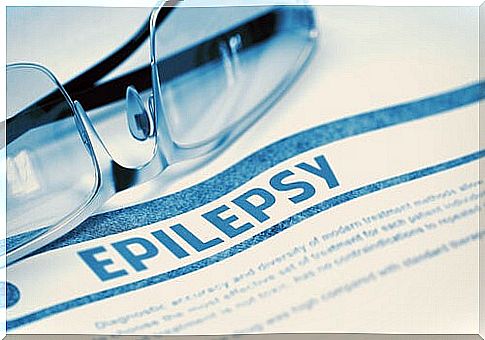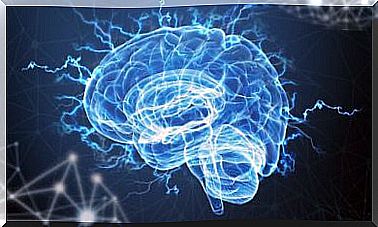Antiepileptic Drugs: Action And Effects

Antiepileptic drugs are the primary treatment for epilepsy. Learn in this article all about this disease, what it consists of and how to treat it.
Epilepsy is a chronic disorder of the central nervous system in which brain activity is disturbed. It manifests itself through epileptic seizures with convulsions.
To be considered epilepsy, they must have suffered at least two seizures. An isolated seizure episode is just a symptom. It can be caused by a specific abnormal functioning of neurons, but it does not have to be repeated.
An epileptic episode can have different symptoms, among the most common are:
- Jerky movements
- Confusion.
- Absences
- Loss of consciousness
Therefore, we can define epilepsy as a brain disorder that predisposes to epileptic seizures and has associated physical, psychological and social consequences. The prevalence of this disease in the population is between 0.4 and 0.8%.
The incidence is 50 new cases per 100,000 inhabitants per year . It can affect anyone, of any gender and of any age, although it more often begins in infants or the elderly.

Epileptic seizures
Epileptic seizures can be classified into two large groups, which in turn are divided into more subtypes:
- Focal or partial seizures: seizures are caused by abnormal activity in a specific area of the brain. In turn, they are divided into:
- Simple : they do not cause loss of consciousness.
- Complex : there is a loss of consciousness or consciousness.
- Generalized seizures: seizures occur in all areas of the brain. Generalized crises are usually classified, in turn, into different types:
- Absence : the gaze stays fixed for a few seconds and body movements such as rapid blinking or lip smacking occur.
- Tonic : muscle stiffness occurs.
- Atonic : the muscles relax and muscle control is lost, causing falls.
- Clonic : repetitive tremors or shaking occurs in different parts of the body.
- Myoclonic : short jerks occur in different parts of the body. They are short and sudden jerky movements.
- Tonic-clonic : these are the most intense seizures, sudden loss of consciousness, muscle spasms, stiffness, screaming, etc. can occur.
How do antiepileptic drugs work?
Antiepileptic drugs are the basic treatment for patients with epilepsy. Its objective is to restore neuronal balance to avoid the appearance of epileptic seizures or, at least, control them. There are different mechanisms by which these drugs modulate neuronal excitability. We can highlight two main mechanisms:
- Activation of the GABA inhibitory system : GABA is the inhibitory neurotransmitter par excellence; it is in charge of inhibiting neuronal activation.
- Inhibition of the glutamate excitatory system : glutamate is the main excitatory neurotransmitter; activates neural processes in the brain.
Specifically, neurons are activated or inhibited according to the difference in electrical potential they have. That is, in the neuronal membrane there are ionic channels that modulate neuronal activity, allowing, or not, ions to pass through it. Many of the antiepileptic drugs act on these voltage-gated ion channels.
Types of antiepileptic drugs
There are many different antiepileptic drugs, and not all of them work the same way for all patients. Neither are the adverse effects the same. Each case must be studied in a particular way by the specialist so that he decides the treatment that best suits the specific needs of the patient. Depending on their structure, we can classify antiepileptic drugs into:
- Hydantoins, such as phenytoin.
- Barbiturates, such as phenobarbital.
- Iminostilbenes, such as carbamazepine.
- Benzodiazepines, such as diazepam.
- Valproic acid.
- Others, like gabapentin or topiramate.
Another classification divides antiepileptic drugs into:
- Classic antiepileptics :
- First generation, such as phenobarbital or phenytoin.
- Second generation, such as carbamazepine, valproic acid, and benzodiazepines.
- New antiepileptic drugs, such as gabapentin and lamotrigine.
- Others, such as oxcarbamazepines and topiramate.
According to its mechanism of action we can also make a different classification:
- Na channel inhibitors : carbamazepine, oxcarbamazepine, phenytoin, and lamotrigine.
- Drugs that act on GABA receptors : benzodiazepines, barbiturates, valproic acid and gabapentin.
- Drugs that act on glutamate receptors: topiramate.

Side effects
The most common side effects in antiepileptic drug treatment are:
- Drowsiness and dizziness
- Headache.
- Gastrointestinal symptoms.
- Difficult to focus.
- Altered mood.
- Blurry vision.
To avoid the appearance of unwanted effects, the guidelines set by the specialist should be followed. Drugs should always be taken at the same time and their administration cannot be stopped abruptly. Treatment with antiepileptic drugs should be controlled and monitored by the doctor on a regular basis.
Interactions of antiepileptic drugs with other drugs and substances are frequent, so you should always consult your doctor before taking any medication on our own, as well as nutritional supplements or other similar compounds.









